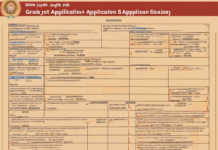The introduction of technology in the field of education has revolutionized the way we assess and evaluate students’ performance. One of the most common practices in the education sector is the release of School Wise Results. This process involves the publication of student outcomes at the school level, providing an overview of the overall performance of the institution. In this article, we will delve into the intricacies of School Wise Results, their significance, the process involved, and how they impact various stakeholders in the education ecosystem.
The Significance of School Wise Results
School Wise Results play a vital role in measuring the academic progress of a school. It serves as a performance indicator for educational institutions and reflects the effectiveness of their teaching methodologies, curriculum, and overall management. These results offer stakeholders, including parents, teachers, school administrators, and policymakers, valuable insights into the strengths and weaknesses of a school. Furthermore, School Wise Results can help in identifying areas that require improvement, implementing targeted interventions, and enhancing the quality of education provided.
Understanding the Process
The process of preparing and releasing School Wise Results involves several key steps:
1. Data Collection
Schools collect data on students’ performance throughout the academic year. This data includes scores from exams, assessments, projects, and other academic activities.
2. Compilation and Analysis
Once the data is collected, it is compiled and analyzed to determine the overall performance of students at the school level. This analysis helps in identifying trends, patterns, and areas of improvement.
3. Result Generation
Based on the analysis, School Wise Results are generated, showcasing the performance of students in different subjects, grades, and assessments. These results are often presented in the form of reports or online portals accessible to stakeholders.
4. Dissemination
The final step involves disseminating the School Wise Results to various stakeholders, including parents, teachers, students, and school management. This communication is crucial for keeping all parties informed about the school’s performance and fostering transparency in the education system.
Impact on Various Stakeholders
1. Parents
School Wise Results enable parents to gauge their child’s academic progress and compare it with the overall performance of the school. This information helps them make informed decisions regarding their child’s education and provides insights into areas where additional support may be required.
2. Teachers
For teachers, School Wise Results serve as a feedback mechanism on their teaching methods and strategies. By analyzing these results, educators can identify strengths and weaknesses in student learning, adapt their teaching approaches, and tailor instructional practices to enhance student outcomes.
3. School Administrators
School administrators rely on School Wise Results to evaluate the effectiveness of the school’s academic programs, identify areas for improvement, and make data-driven decisions to enhance overall performance. These results also provide a basis for setting goals, measuring progress, and ensuring accountability within the institution.
4. Students
School Wise Results empower students to assess their own performance, set learning goals, and track their progress over time. By understanding their strengths and areas needing improvement, students can take proactive measures to enhance their academic performance and achieve their educational objectives.
FAQs:
1. What is the importance of School Wise Results?
School Wise Results provide insights into the overall performance of a school, helping stakeholders identify strengths and weaknesses, implement targeted interventions, and improve the quality of education.
2. How are School Wise Results prepared?
Schools collect, compile, and analyze data on student performance to generate School Wise Results. These results are then disseminated to parents, teachers, students, and school administrators.
3. How do School Wise Results benefit parents?
Parents can use School Wise Results to monitor their child’s academic progress, make informed decisions about their education, and identify areas where additional support may be needed.
4. What role do School Wise Results play for teachers?
For teachers, School Wise Results serve as a feedback mechanism on their teaching methods, helping them identify areas for improvement, adapt instructional strategies, and enhance student learning outcomes.
5. How do School Wise Results impact students?
School Wise Results empower students to assess their performance, set learning goals, and track their progress. By understanding their strengths and weaknesses, students can take proactive steps to improve their academic performance.
In conclusion, School Wise Results are instrumental in evaluating the performance of educational institutions, fostering transparency, and driving continuous improvement in the quality of education provided. By leveraging these results effectively, stakeholders can collaborate to create a conducive learning environment that supports the holistic development of students and enhances overall educational outcomes.









